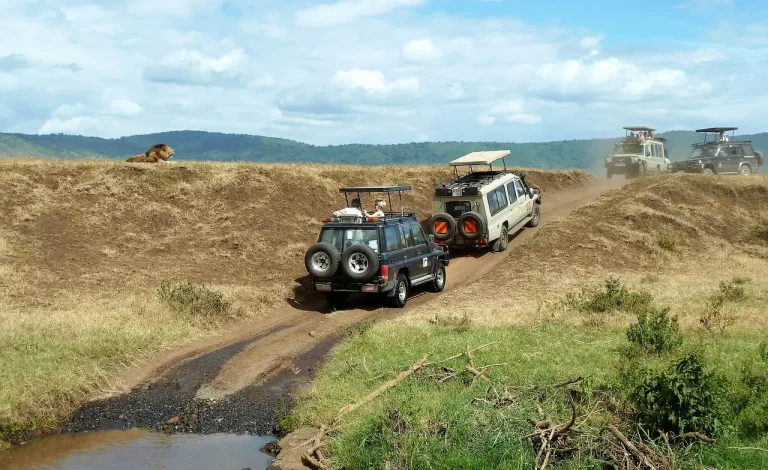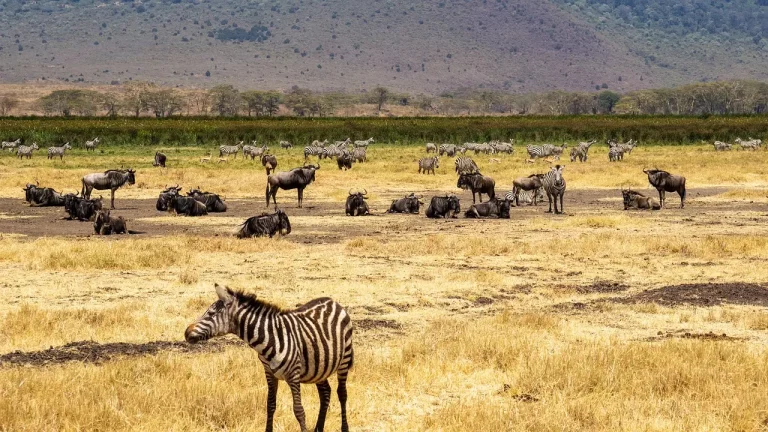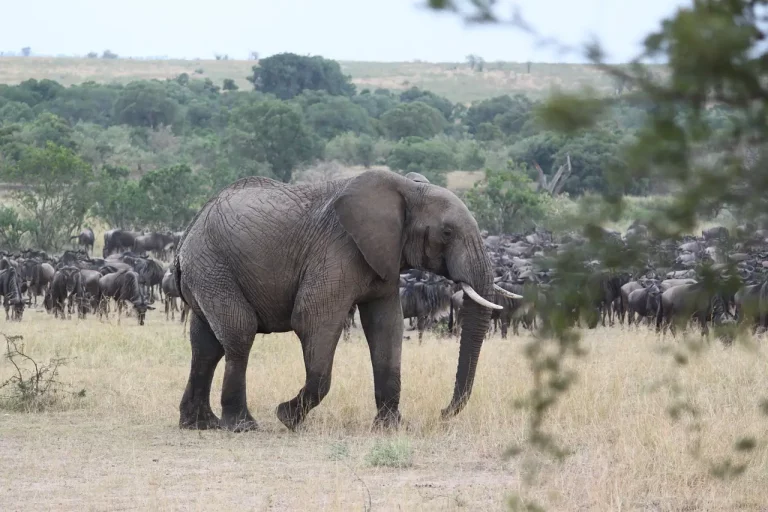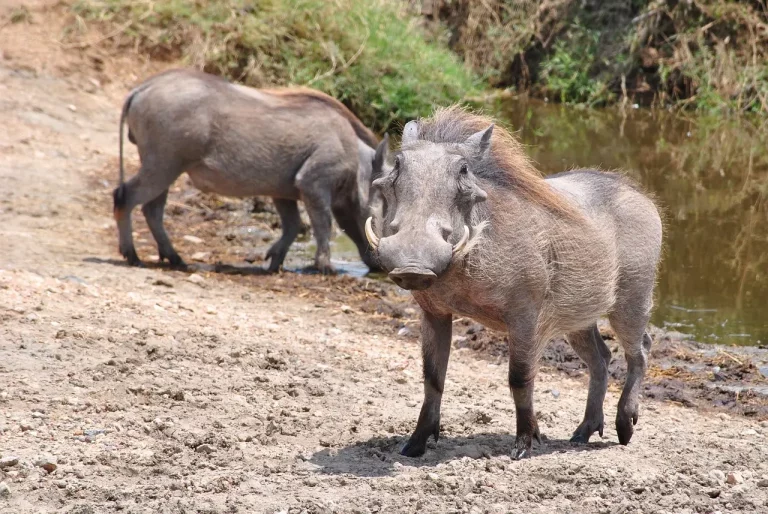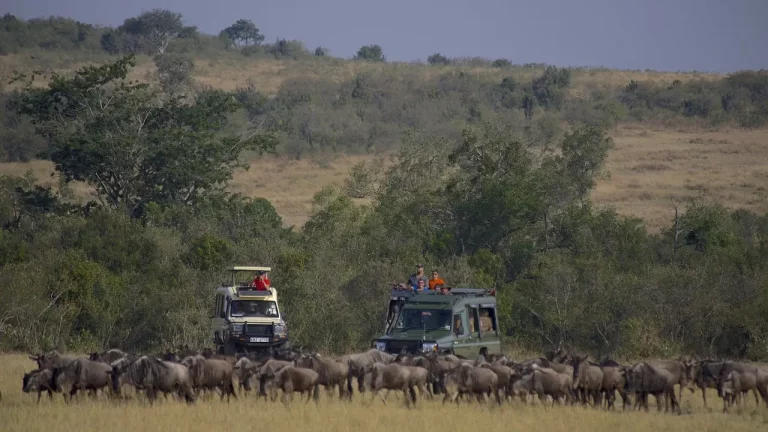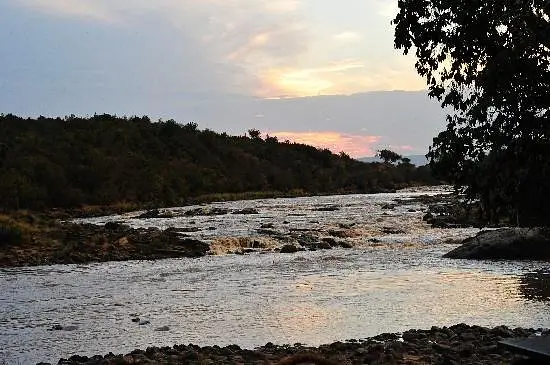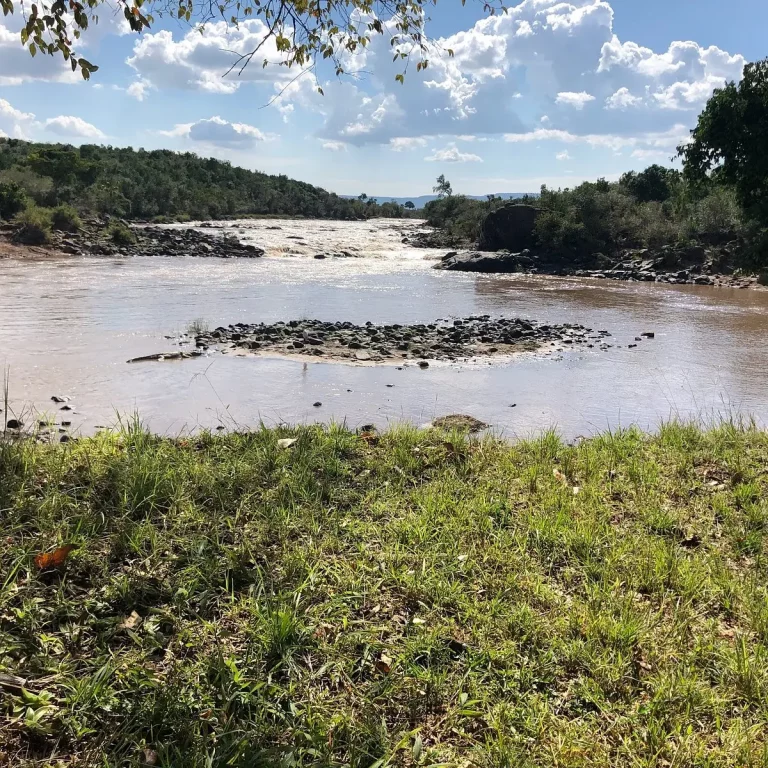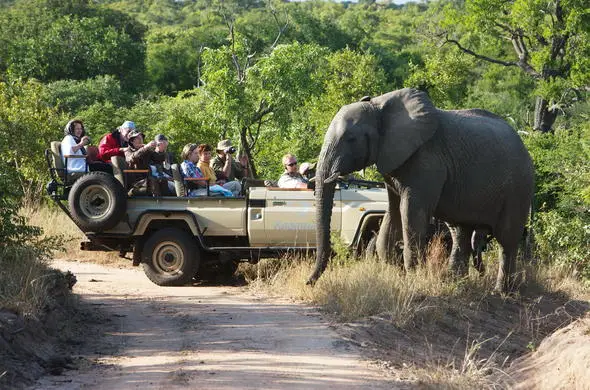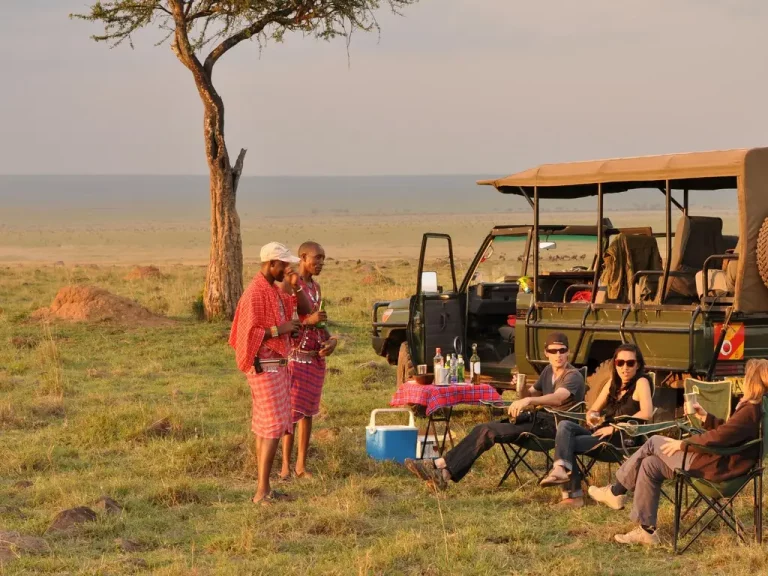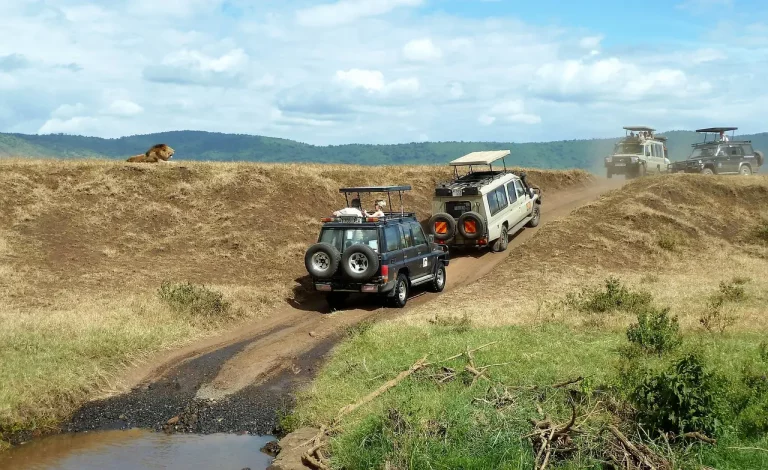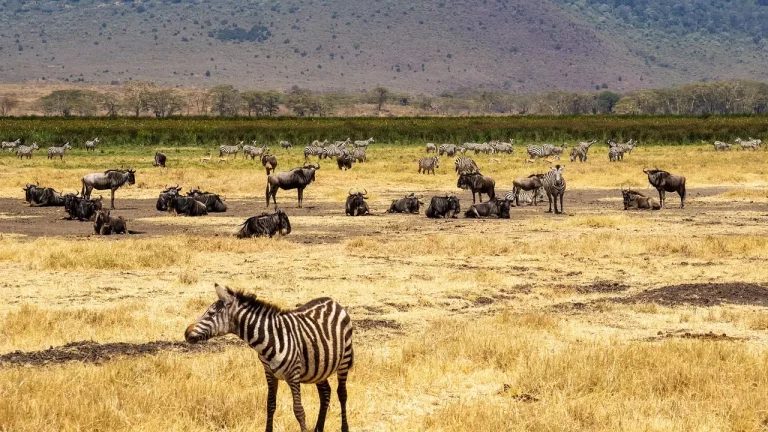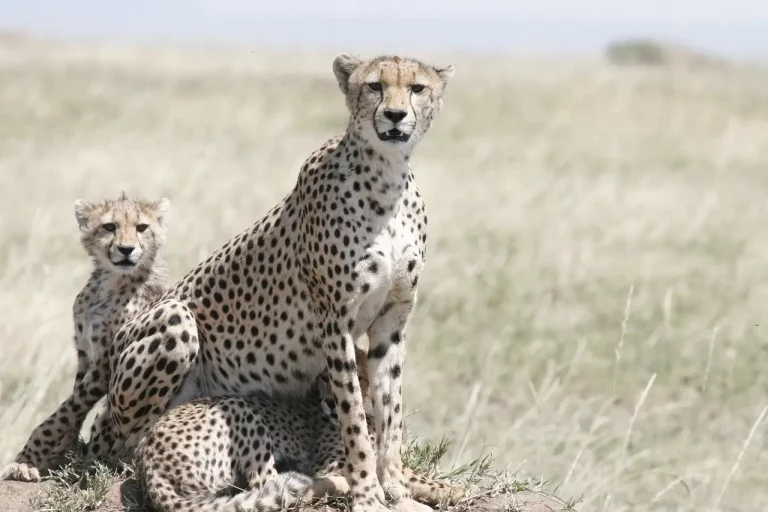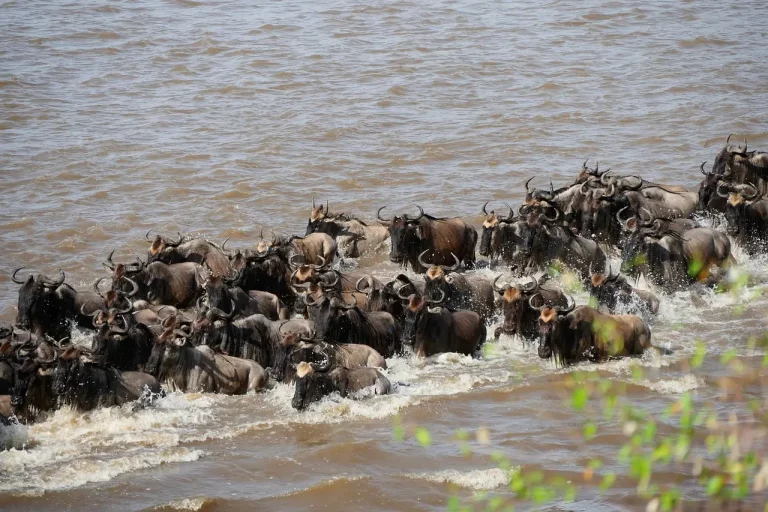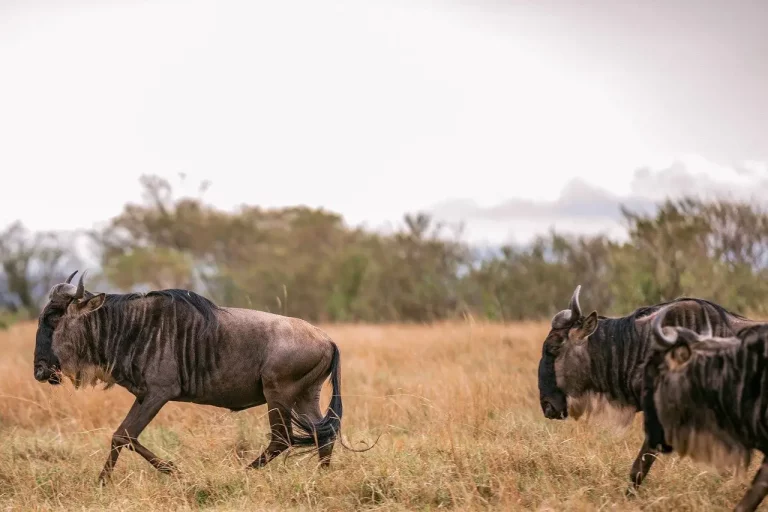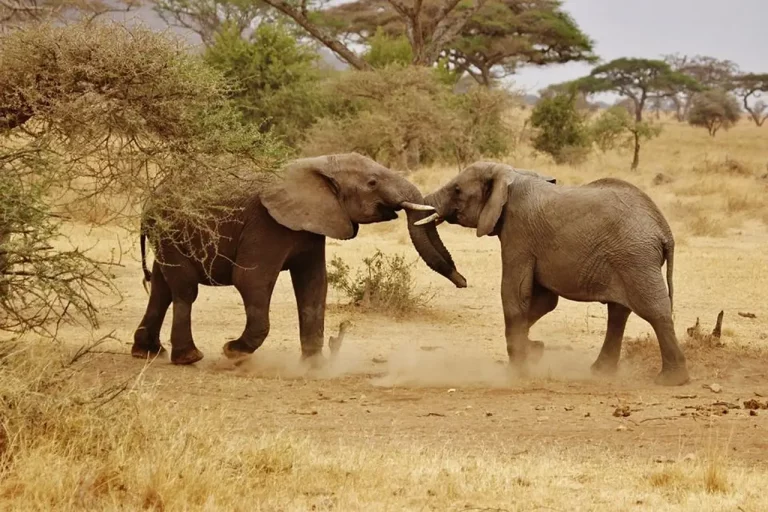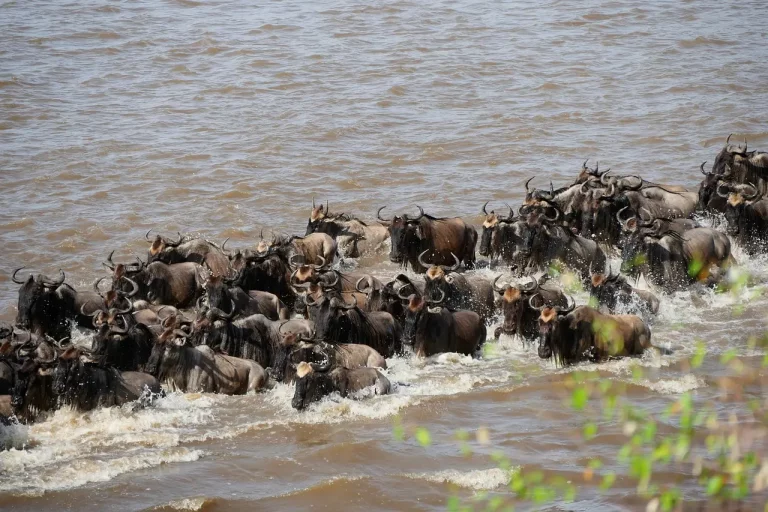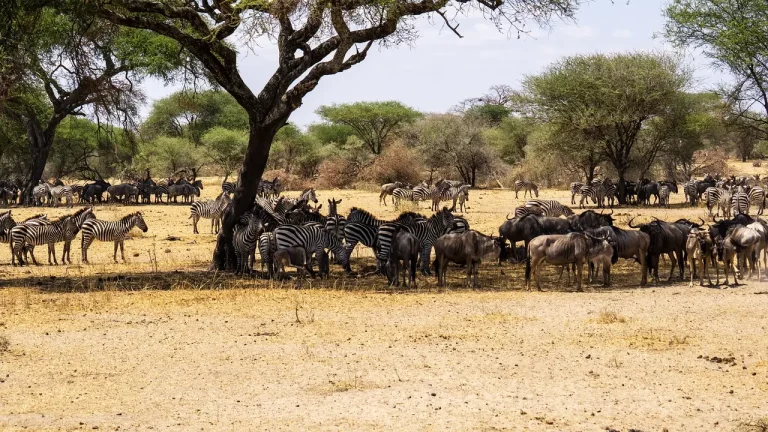2025 Wildebeest Migration Masai Mara Packages - Travel Guide and Packages
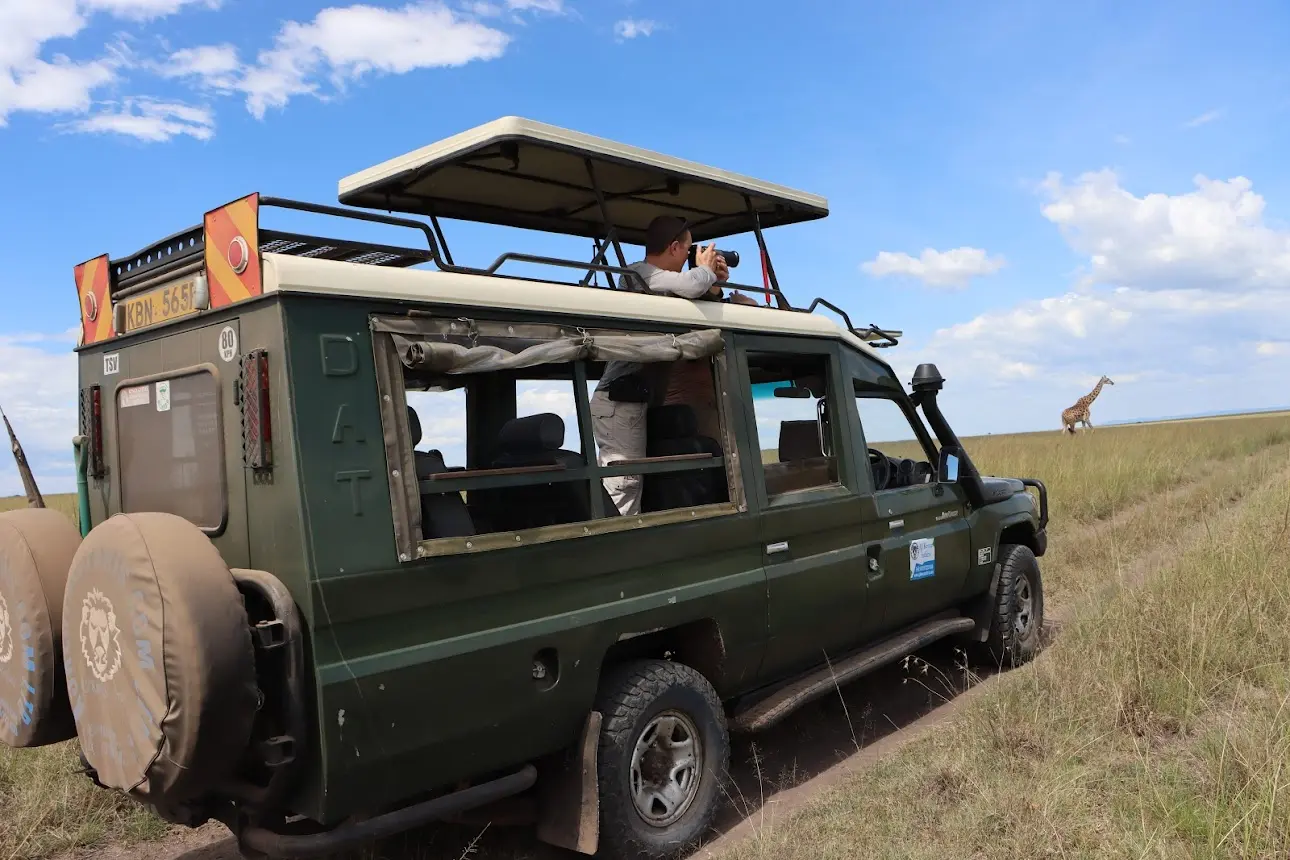
Imagine witnessing one of nature’s most spectacular events. An awe-inspiring journey of millions of animals as they cross the vast plains of East Africa! This epic odyssey, known as the great migration, the gnu Migration, or simply the wildebeest migration Masai Mara, will leave you breathless.
But what is the best time to visit Serengeti National Park for a great migration safari? When is the best time to see the large herds in Northern Serengeti, Central Serengeti, and Southern Serengeti respectively? And what is the best month to witness the dramatic Mara River crossing as the herds cross from Serengeti National Park to Masai Mara in Kenya?
In this article, our Masai Mara safari guide will share everything you need to know to plan an unforgettable Masai Mara wildebeest migration safari. But before then, let us share how you can reach us to start planning your great migration safari. We will also share our most booked Masai Mara migration packages.
Reach us to Start Planning Your Masai Mara Wildebeest Migration Tour
The time to plan your Masai Mara Serengeti Migration Safari is now! We invite you to contact us via WhatsApp or phone at +254-704-532-105. We are also available through email at safarioffers@kenyaluxurysafari.co.uk or safarioffers@ajkenyasafaris.com. If you prefer, you can leave us your details by filling our “Book a Safari Form” and we will get back within 12 hours.
Masai Mara Migration Videos
Our Kenya Migration packages - Packages and Cost
The Great Wildebeest Migration in Masai Mara
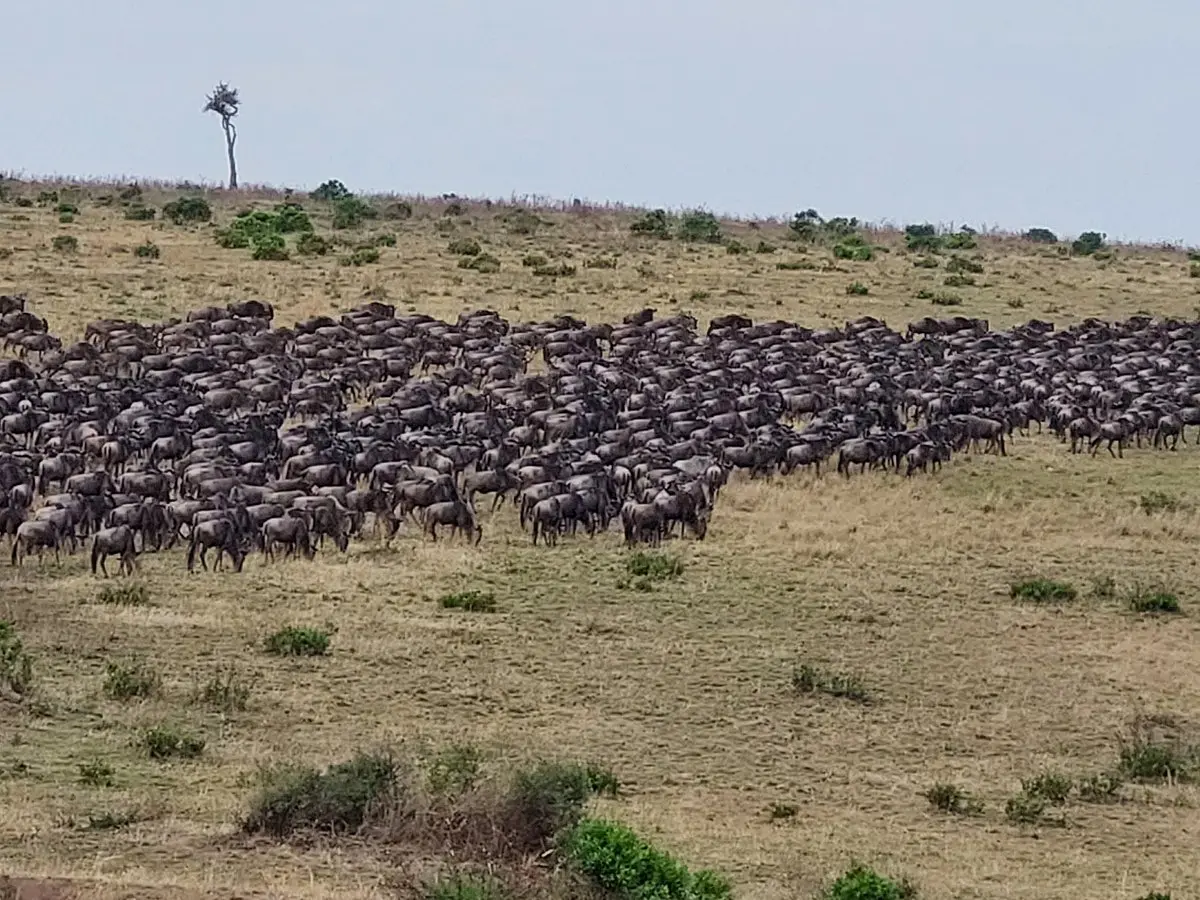
The annual wildebeest migration, also known as the great migration, is a breathtaking event that takes place across the Serengeti-Mara ecosystem, which spans the Masai Mara in Kenya and the northern Serengeti in Tanzania. Millions of wildebeest herds, zebras, and other animals embark on this age-old route in search of fresh grazing and water, driven by instinct and the pursuit of greener pastures as the wildebeest migrate. The Great Wildebeest Migration is a natural phenomenon that offers some of the most dramatic river crossings and unforgettable wildlife encounters you will ever experience.
The herds follow a clockwise direction, crossing the Masai Mara plains and moving south into Tanzania’s Serengeti, including the northern and eastern Serengeti, where they face the thrilling Mara River crossing during their masai mara migration journey. This epic journey is dictated primarily by the availability of water and fresh grazing, with the herds constantly seeking out these vital resources.
The majestic landscapes of the eastern Serengeti and the incredible wildlife encounters make the Wildebeest Migration an unparalleled experience that should be on every nature lover’s bucket list.
The Annual Phenomenon
The Serengeti migration is an amazing natural phenomenon triggered by East Africa’s rains and the instinctual search for food, causing millions of wildebeest to migrate across the Serengeti-Mara ecosystem. The herds traverse the Serengeti National Park from January, moving from the north-east region to the area near Lake Ndutu, before heading north again through the central Serengeti. The precise timing of the migration varies each year, depending on the rains and the availability of water and fresh grazing.
The journey is fraught with danger and challenges, as the herds face the Grumeti River in the western Serengeti and the Mara River in the Masai Mara. These river crossings are some of the most thrilling obstacles faced by the wildebeest during their migration, with many unable to escape the giant Nile crocodiles lying in wait for their prey. The relentless pursuit of fresh grazing and water ultimately drives the herds onward through these treacherous waters, making the river crossings an exhilarating spectacle to witness.
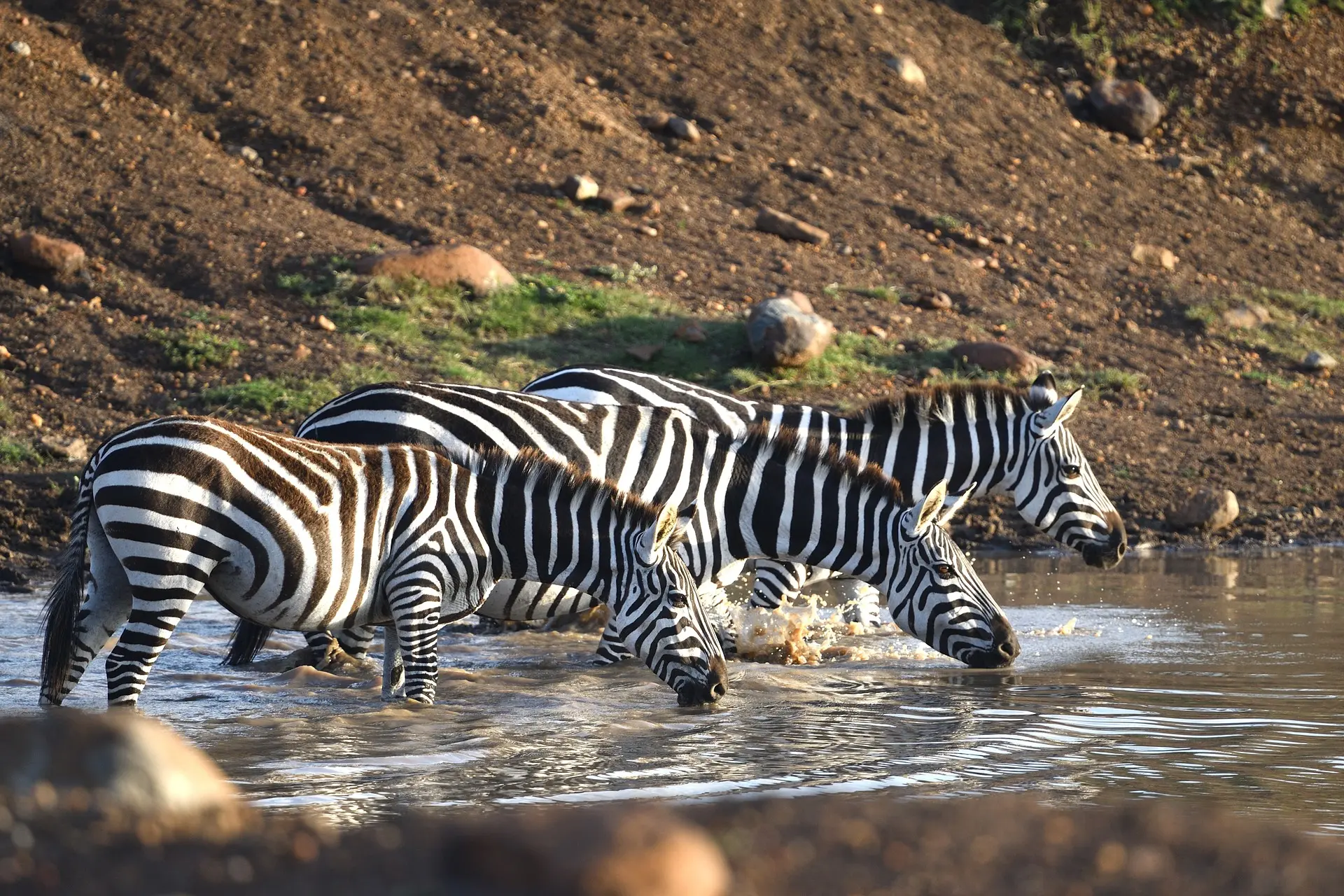
Wildlife Encounters
The Wildebeest Migration offers incredible wildlife encounters that are truly a once-in-a-lifetime experience. One of the most exciting aspects of the migration is the predator-prey interactions that occur as the herds move through the Serengeti-Mara ecosystem. Some of the predators that follow the migrating herds include:
- Lions
- Leopards
- Cheetahs
- Hyenas
These predators make for thrilling sightings and unforgettable moments.
During the migration, the calving season takes place in February, where thousands of newborn wildebeest take their first steps into the world. This exciting time is characterized by increased predator activity, as the big cats and other carnivores take advantage of the abundance of vulnerable prey. Witnessing the circle of life during the calving season is a unique and unforgettable experience, adding another layer of excitement to the Wildebeest Migration safari.
Timing Your Visit: When to Witness the Migration
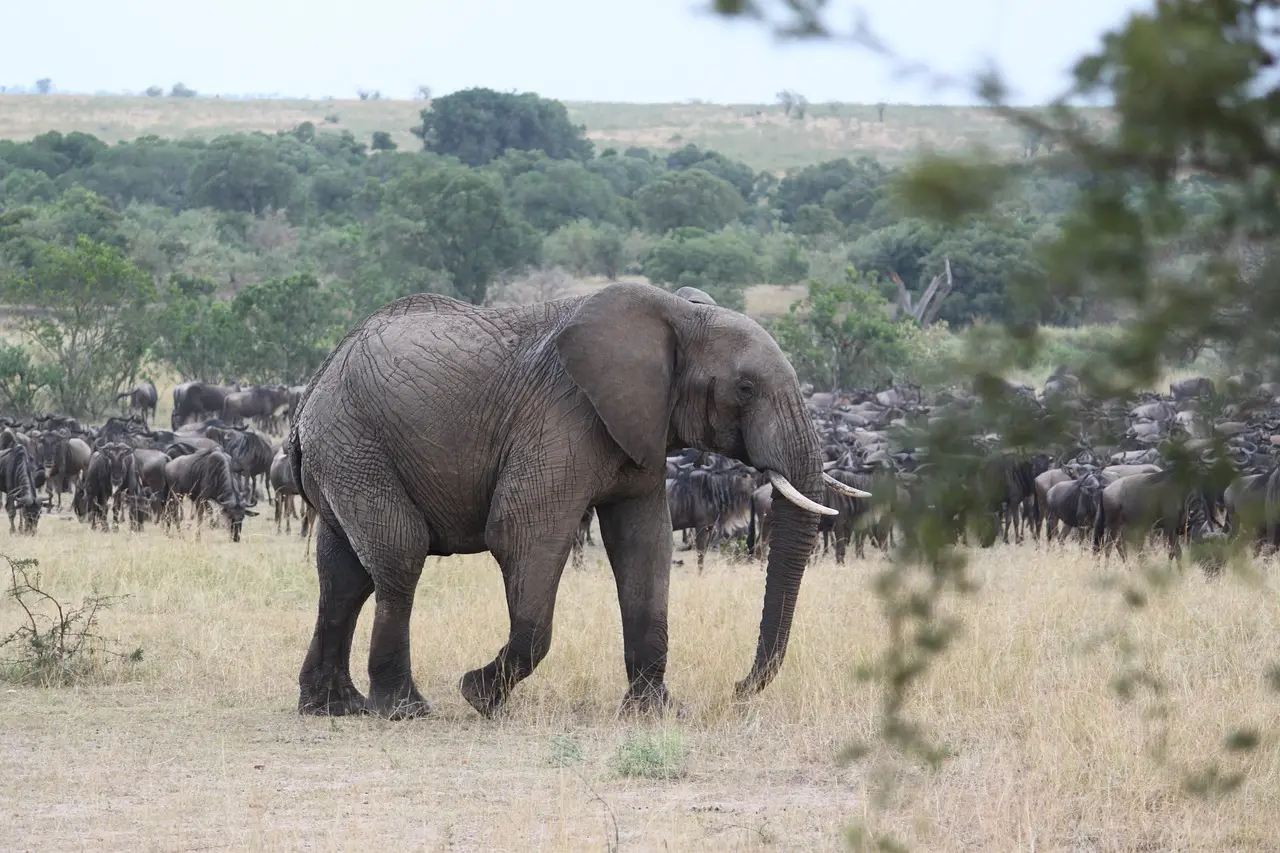
Experiencing the magic of the Wildebeest Migration relies heavily on the timing of your visit. The migration is a year-round event, but certain periods offer more dramatic and memorable experiences. River crossings, one of the most thrilling aspects of the migration, usually occur between June and October, coinciding with the high season for tourism. The calving season, on the other hand, takes place between January and March, when thousands of newborn wildebeest join the migration.
Carefully planning your visit increases your chances of witnessing the migration and its incredible natural phenomena. The timing of the migration varies each year, depending on the rains and the availability of water and fresh grazing, so it’s important to research and consult with experts when planning your trip. If your visit is timed carefully, your chances of witnessing the Wildebeest Migration and creating unforgettable memories are maximized.
River Crossings
Witnessing the dramatic river crossings is often considered the highlight of the Wildebeest Migration safari. However, these events are unpredictable and cannot be guaranteed. The water level of the Grumeti River in the western Serengeti and the Mara River in the Masai Mara primarily dictates the occurrence of river crossings. The herds typically cross the Mara River between late July to August, and again on their return south around the last two weeks of October through early November.
Planning for a longer safari boosts your chances of witnessing river crossings, as it gives more time to follow the herds and catch these thrilling events. Remaining flexible and patient enhances your opportunity to experience the unforgettable spectacle of the Wildebeest Migration River crossings.
Calving Season
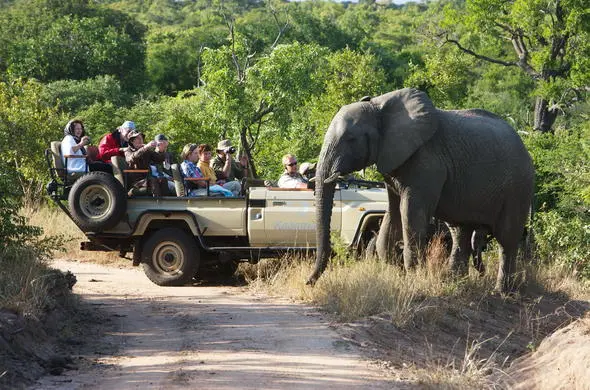
The calving season, taking place between January and March, offers a unique opportunity to witness the birth of thousands of newborn wildebeest and increased predator activity. During this time, the herds are usually in the southern Serengeti near Lake Ndutu, where the nutritious grasses provide the ideal conditions for the wildebeest to give birth and nurse their young.
Visiting the Masai Mara and Serengeti during the calving season allows you to observe the circle of life in action, as predators such as lions, leopards, and hyenas take advantage of the abundance of vulnerable prey. This exciting period of the migration offers a unique and unforgettable wildlife experience, showcasing the beauty and harsh reality of nature.
Accommodation Options for a Wildebeest Migration Safari

When planning your Wildebeest Migration safari, your choice of accommodation is an important decision. There are two main types of accommodation available for your safari: permanent lodges and mobile camps. Each option offers different levels of comfort and proximity to the migration, so understanding the advantages of each will help you make the best choice for your safari experience.
Permanent lodges provide a more luxurious experience, with access to amenities such as swimming pools, restaurants, and bars. Mobile camps, on the other hand, offer a more authentic safari experience, as they move with the migration and provide a closer proximity to the wildlife. Depending on your preferences and budget, you can choose the accommodation option that best suits your needs and enhances your Wildebeest Migration safari experience.
Permanent Lodges
Permanent lodges offer a more comfortable and luxurious experience compared to mobile tents, providing a fixed position and suitability for elderly travelers. These lodges are usually located in more remote areas, providing a more private and exclusive safari experience. They also tend to offer top-notch service and are fully equipped with amenities such as swimming pools, restaurants, and bars.
Choosing a permanent lodge allows you to relish the comforts and conveniences of a more luxurious accommodation option while still partaking in the incredible Wildebeest Migration experience. However, it’s essential to book early, as the top accommodation options tend to fill up fast, especially during the high season between June and October.
Mobile Camps
Mobile camps offer a more authentic safari experience, as they move with the migration and provide a closer proximity to the wildlife. These temporary camps are set up and taken down each season and are designed to have minimal impact on the environment. Mobile camps are also usually more affordable than permanent lodges, making them an attractive option for budget-conscious travelers.
Choosing a mobile camp offers a more immersive safari experience, as you can follow the herds as they migrate across the Serengeti-Mara ecosystem. Mobile camps also provide:
- A private and authentic safari experience
- Comfortable beds
- Hot showers
- Delicious meals
This ensures a truly memorable Wildebeest Migration safari.
Planning Your 2024 Wildebeest Migration Safari

Planning your Wildebeest Migration safari involves several key factors, such as booking early, diversifying game viewing, and adding additional destinations to your itinerary. By taking the time to carefully plan your safari, you can ensure that you have the best possible experience and create unforgettable memories.
Securing the best accommodation options and prices for your safari necessitates early booking. Diversifying your game viewing by visiting different areas of the Masai Mara and participating in various activities, such as hot air balloon rides or night game drives, can enhance your overall safari experience.
Finally, adding additional destinations, such as other national parks or cultural experiences, can enrich your trip and provide a more well-rounded experience.
Booking Early
Booking early ensures that you get the best accommodation options and the best prices for your Wildebeest Migration safari. Lodges and camps fill up fast, especially during the high season between June and October, so it’s important to book as early as possible to ensure availability and secure the best rates.
You can book early for a Wildebeest Migration Safari by contacting a tour operator or booking directly with the lodge or camp. When booking early, consider the time of year you plan to visit, the type of accommodation you prefer, and the activities you would like to do. Research the different tour operators and lodges or camps to find the best option for you.
Diversifying Game Viewing
Diversifying game viewing allows you to experience a variety of wildlife and landscapes, enhancing your overall safari experience. Visiting different areas of the Masai Mara, like the Serengeti, the Ngorongoro Crater, and the Masai Mara National Reserve, allows you to observe diverse behaviors of the same species in varying habitats.
Beyond exploring different areas, participating in a variety of activities like hot air balloon rides or night game drives is worth considering. These unique experiences can provide a fresh perspective on the Wildebeest Migration and offer unforgettable moments that you will cherish for years to come.
Adding Additional Destinations
Adding additional destinations to your Wildebeest Migration safari can greatly enrich your trip and provide a more well-rounded experience. Consider visiting other national parks, such as the magnificent Serengeti National Park, stunning Lake Nakuru National Park, or gorgeous Amboseli National Park, to witness a diverse array of wildlife and landscapes.
Alternatively, you can include cultural experiences in your itinerary, such as visiting local Maasai villages or participating in community-based projects. These additional destinations can provide valuable insights into local cultures and traditions, further enhancing your Wildebeest Migration safari.
Conservation and Responsible Tourism

When planning a Wildebeest Migration safari, conservation and responsible tourism play a crucial role. Supporting local communities and minimizing environmental impact aids in preserving the environment and wildlife for future generations. This includes choosing eco-friendly accommodations, following park guidelines, and practicing responsible wildlife viewing.
Involving local people in decision-making, using local services and products, and respecting local customs and traditions are also significant. Practicing responsible tourism ensures the long-term sustainability of the Masai Mara’s wildlife and habitats, along with the economic benefits that tourism provides to the local communities.
Supporting Local Communities
Supporting local communities through responsible tourism practices helps preserve the environment and wildlife for future generations. By involving local communities in decision-making, using local services and products, and respecting local customs and traditions, you can contribute to the livelihoods of the people living in the area and help protect the Masai Mara’s wildlife and habitats.
In addition, supporting local communities contributes to the conservation of the Masai Mara ecosystem, as they play a crucial role in the protection and preservation of the landscape and wildlife. Actively supporting local communities’ aids in ensuring the long-term sustainability of their resources and the remarkable wildlife experiences that the Masai Mara affords.
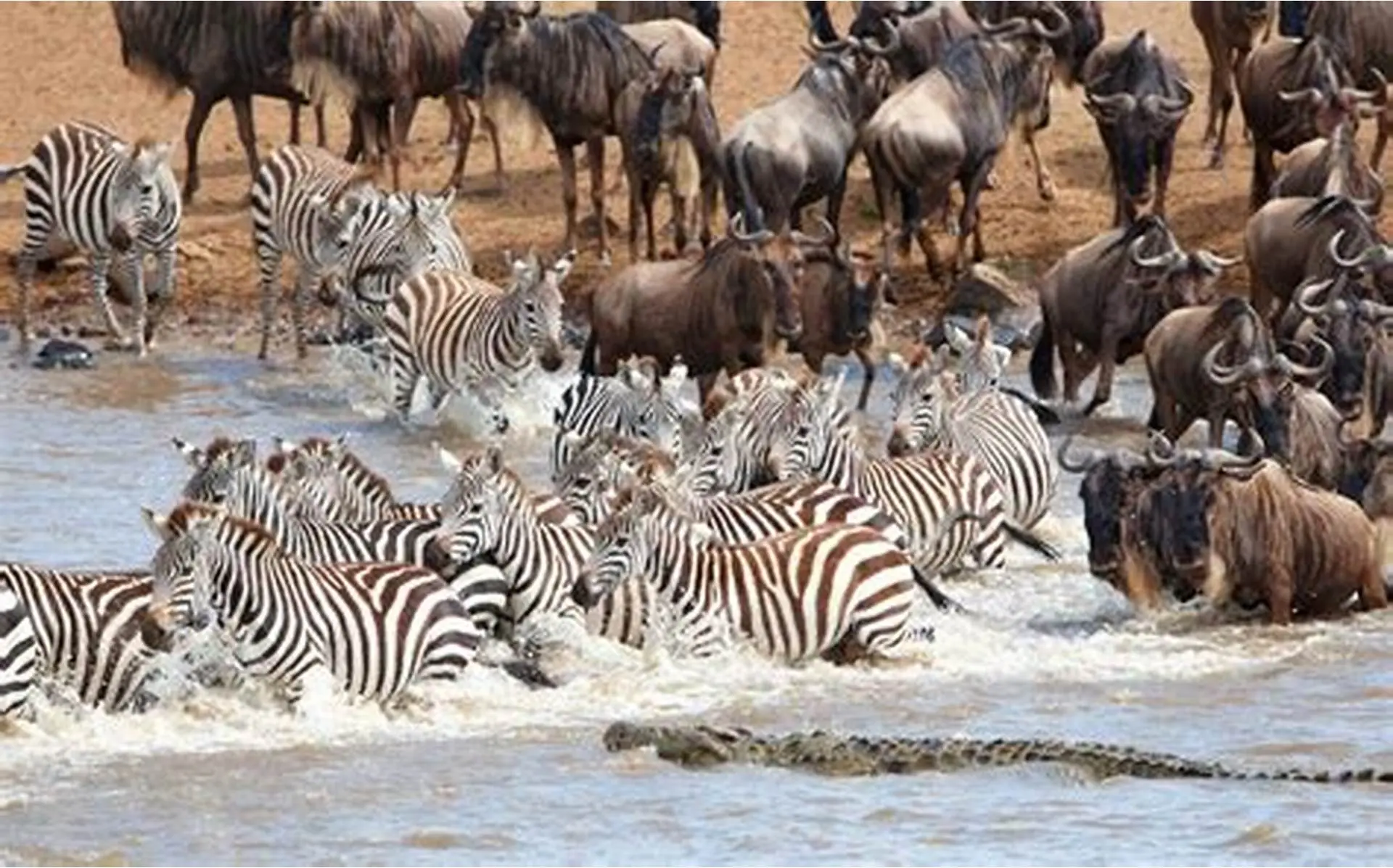
Minimizing Environmental Impact
When planning a Wildebeest Migration safari, a crucial aspect of responsible tourism is minimizing environmental impact. Choosing eco-friendly accommodations, such as permanent lodges or mobile camps that are built with sustainable materials and designed to minimize their environmental impact, is one way to reduce your footprint during your safari.
Additionally, following park guidelines and practicing responsible wildlife viewing are essential for minimizing your impact on the environment. Stay on designated trails, keep a safe distance from wildlife, and do not feed the animals. Being mindful of your actions and their potential consequences aids in protecting the Masai Mara’s wildlife and their habitats for future generations.
Summary
The Wildebeest Migration in Masai Mara is a truly awe-inspiring experience that should be on every nature lover’s bucket list. By carefully planning your visit, choosing the right accommodation, and practicing responsible tourism, you can ensure an unforgettable and rewarding safari experience. Witnessing the incredible wildlife encounters, dramatic river crossings, and breathtaking landscapes of the Serengeti-Mara ecosystem is a once-in-a-lifetime opportunity that you will cherish for years to come.
So, are you ready to embark on the adventure of a lifetime? Start planning your unforgettable Wildebeest Migration safari today, and prepare to be amazed by the wonders of the Masai Mara and the Serengeti. The memories you create during this epic journey will last a lifetime, and the experiences you share will leave a lasting impact on your heart and soul.
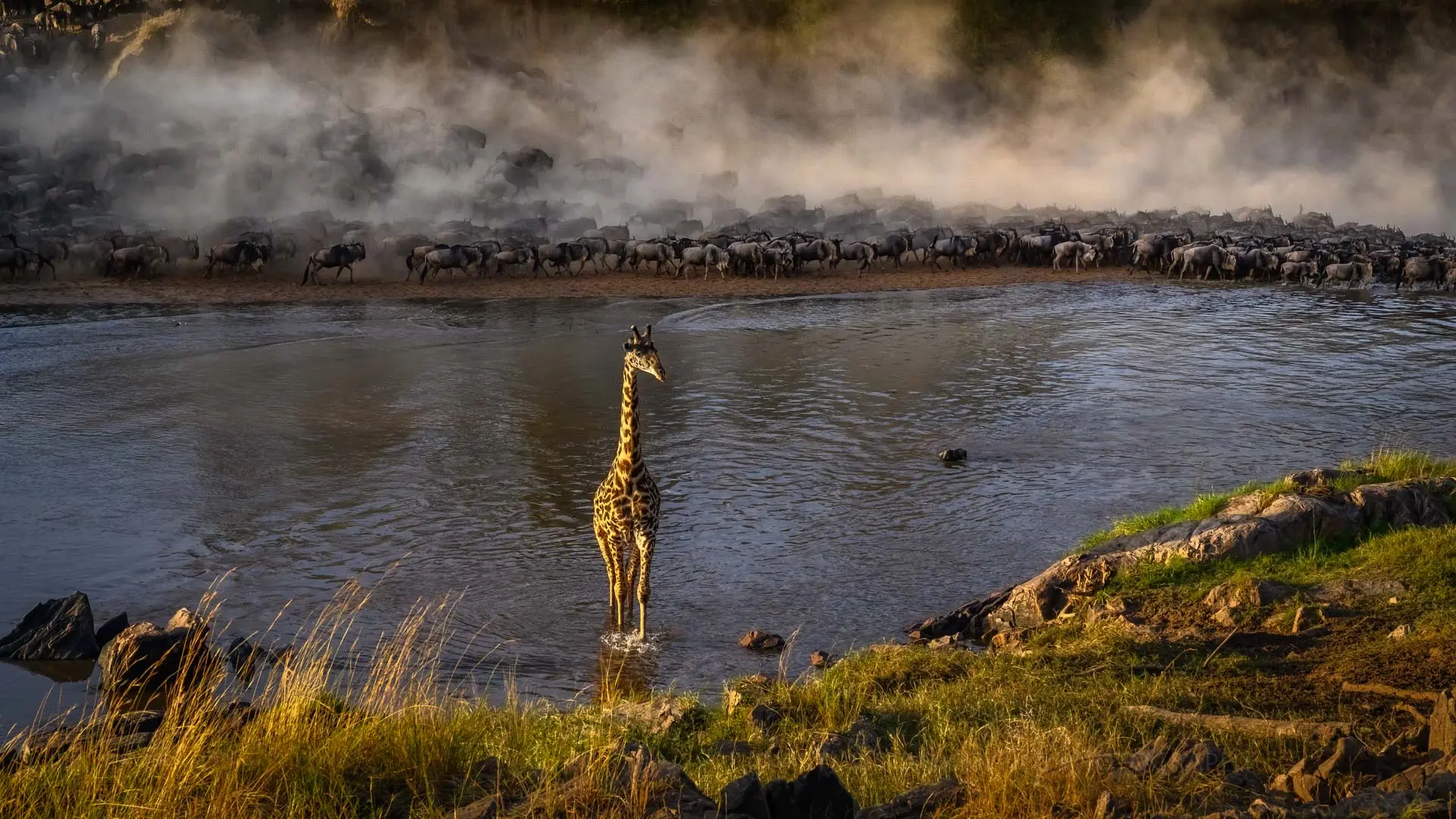
Key Takeaways
- Witness the 2024 Great Wildebeest Migration in Masai Mara for an unforgettable wildlife experience!
- Book early and plan your safari with diversified game viewing, additional destinations & eco-friendly accommodations.
- Support local communities while protecting the environment and wildlife, a once in a lifetime adventure awaits!
Frequently Asked Questions
Next, we will answer the most common questions we get about the wildebeest migration 2024. These include: Which months do wildebeest migrate to Masai Mara? What is the wildebeest migration in Masai Mara 2023? What month is the great migration in Kenya? What month is the wildebeest migration? What month is the Serengeti migration? What month is the great migration in Africa? Where is the migration in Serengeti?
Which months do wildebeest migrate to Masai Mara?
The wildebeest migration to the Masai Mara typically begins in late July and runs through August, with stragglers heading in through September, and returning south between the last two weeks of October and early November. The incredible spectacle of the migration is made up of 1.5 million wildebeest along with zebra and antelope, all making their way across the Grumeti River and the Mara River Basin.
What is the wildebeest migration in Masai Mara 2024?
Experience one of nature’s greatest spectacles in the Maasai Mara in 2024 with the wildebeest migration, when 1.2 million herds cross the Nile crocodile-infested Mara River! July to October is the best time to see them as they search for fresh grass and witness their predator and prey interactions. Don’t miss out on this incredible experience!
What month is the Serengeti migration 2024?
Experience a once-in-a-lifetime event as the wildebeest make their annual migration from May to July in the Serengeti! Join them on their epic 800-kilometer trek and see the river crossings during the prime wildlife safari season at the Serengeti Mara Camp. This unforgettable journey is sure to be the highlight of your safari adventure!
What types of accommodation are available for a Wildebeest Migration safari?
Experience the Wildebeest Migration in style with either a permanent lodge or a mobile camp, offering varying levels of comfort and closeness to the migration.
How can I ensure responsible tourism during my Wildebeest Migration safari 2024 dates?
Make sure to support local communities, practice responsible wildlife viewing, and minimize your environmental impact to ensure a positive, responsible safari experience during the Wildebeest Migration.

